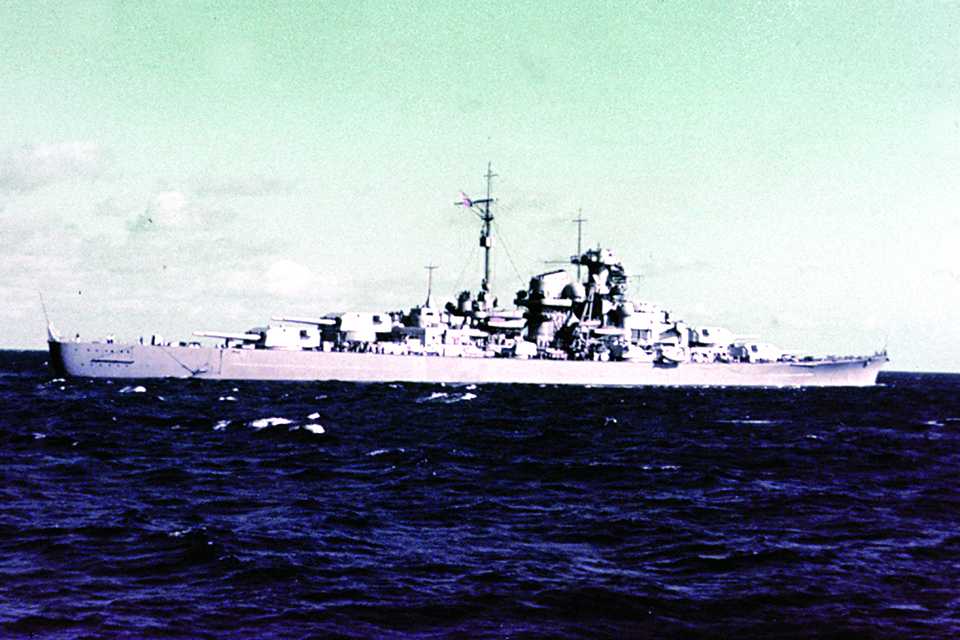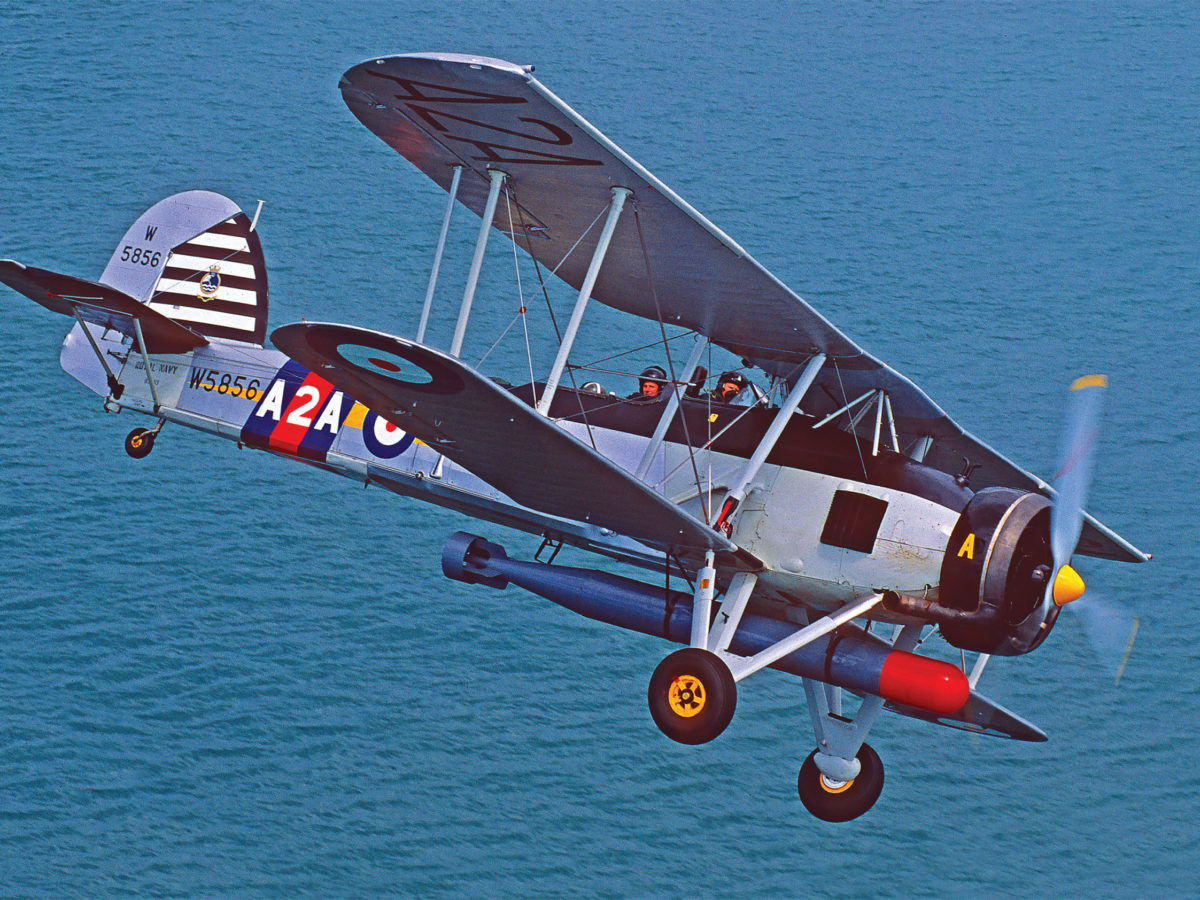 On May 19, 1941, the German battleship Bismarck, accompanied by the cruiser Prinz Eugen and several escort vessels, made its way through the Kattegat Strait separating Nazi-occupied Denmark from neutral Sweden. The 50,000-ton warship’s objective was to reach British convoy routes in the North Atlantic and do as much damage as possible. From the outset the Bismarck had no hope of reaching those routes in secrecy. Swedish aircraft identified the vessels in the German formation, news that made its way quickly and clandestinely to the British military attaché in Stockholm.
On May 19, 1941, the German battleship Bismarck, accompanied by the cruiser Prinz Eugen and several escort vessels, made its way through the Kattegat Strait separating Nazi-occupied Denmark from neutral Sweden. The 50,000-ton warship’s objective was to reach British convoy routes in the North Atlantic and do as much damage as possible. From the outset the Bismarck had no hope of reaching those routes in secrecy. Swedish aircraft identified the vessels in the German formation, news that made its way quickly and clandestinely to the British military attaché in Stockholm.
The Bismarck reached port at Bergen, Norway, the next day. On May 21 a British reconnaissance aircraft snapped a photo of the battleship at anchor. Bismarck and Prinz Eugen put out to sea on May 22; the following day two British cruisers spotted the enemy ships in the Denmark Strait between Greenland and Iceland. The British battleship Prince of Wales and battle cruiser Hood arrived on the scene early on May 24. In the ensuing fight, the Hood blew up spectacularly, with the loss of all but three seamen. The Prince of Wales suffered significant damage. The Bismarck was also damaged and now had a 9-degree list to port and a 3-degree trim to bow, the result of damage to fuel bunkers and efforts to transfer fuel to intact bunkers.
The German admiral in charge of the operation, Günther Lütjens, decided to defer the planned strike at the convoy lanes and instead make for France to effect repairs. He detached the Prinz Eugen; the Bismarck, now operating alone, briefly eluded the British before a Catalina PBY pilot spied the enormous warship. Dozens of British vessels were also hunting the Bismarck, for if the super-battleship ever did break out into the Atlantic, the result could be catastrophic. The Bismarck was nearing shelter at Brest, France, when a fluke of luck caused a torpedo from a carrier-based Swordfish biplane to jam the battleship’s rudder. The Bismarck steamed helplessly in a circle until a British flotilla closed in and, on the morning of May 27, sank the Bismarck, killing all but 114 of the ship’s 2,200-man crew.
Recommended for you
What if?
So ended the Bismarck’s first and only combat voyage—a saga that immediately gained worldwide fame. But what if the German battleship had successfully broken out into the Atlantic? For this to have happened, any of three alterations to the historical events would need to have occurred.
First, the Bismarck would have had to elude detection—an unlikely possibility. Second, the warship would have had to escape damage in the Battle of the Denmark Strait—a possibility, since historically the Bismarck had damage minor enough that Admiral Lütjens could have continued the mission. Third, and most likely, the Bismarck would have had to reach safety at Brest, where it would have joined two smaller battleships, the Scharnhorst and Gneisenau, that had just completed a successful though limited raid against British shipping. Within weeks of Bismarck arriving, all three battleships would have been able to put out to sea in another strike against the Atlantic convoy lanes.
heavy hitter
What would have been the result? Historically, the chief of the German navy, Admiral Erich Raeder, chose to use his limited number of capital ships as surface raiders. His intention was to force the Royal Navy to dilute its strength by diverting warships to convoy escort duty and, in combination with Admiral Karl Dönitz’s U-boats, to sever Britain’s maritime lifelines. Prior to the Bismarck’s sortie this strategy enjoyed some success. Between November 1940 and March 1941 the pocket battleship Admiral Scheer sank 17 merchant vessels totaling over 113,000 tons of shipping. During the same period the cruiser Admiral Hipper accounted for another 53,000 tons. In February 1941 the Scharnhorst and Gneisenau—under the joint command of Lütjens—had reached the Atlantic undetected. The battleships encountered four convoys, but British battleships were escorting two of the groups, and Lütjens’s orders prohibited him from engaging enemy capital ships if at all possible. He therefore withdrew, inflicting little or no damage. Lütjens’s luck was similarly bad with the other two convoys, in large measure because of the proximity of other British battleships. As a result, Lütjens did scant damage, destroying only about 27,000 tons of British shipping.
Lütjens’s caution, however, was driven by the fact that Scharnhorst and Gneisenau (like Admiral Scheer and Admiral Hipper) were lightly armored and less powerful than their British rivals. In contrast, the heavily armored Bismarck could outgun and outrun virtually any of Britain’s capital ships.
GET HISTORY’S GREATEST TALES—RIGHT IN YOUR INBOX
Subscribe to our HistoryNet Now! newsletter for the best of the past, delivered every Monday and Thursday.
Had Bismarck encountered a convoy, the battleship could have successfully engaged the escort vessels and picked off most of the freighters before they could escape, and in the open Atlantic the Bismarck would have been very difficult to locate. Further, the Kriegsmarine had stationed more than a dozen German support vessels ready to resupply and refuel the Bismarck, which would have allowed the battleship to remain at sea as long as three months. United under these conditions with Scharnhorst and Gneisenau, the Bismarck could have done a formidable amount of damage indeed.
Ironically, the original concept for the Bismarck’s historical operation, Rhine Exercise, contemplated just such a raid by Bismarck and the two smaller battleships. Bismarck set out alone in mid-May because the Scharnhorst and Gneisenau were not ready to go to sea. Events proved this course of action unwise, but had the Bismarck sprinted successfully to Brest—which certainly would have occurred but for the fortuitous damage to the Bismarck’s rudder—Rhine Exercise could have proceeded in its original form.
Would the bismarck have given germany the battle of the atlantic?
In any counterfactual it is tempting to make extravagant claims—in this case that Bismarck and consorts could have won the Battle of the Atlantic. That is unlikely. However, the Bismarck’s presence in the Atlantic would have forced the Royal Navy to guard each convoy heavily while at the same time maintaining an extensive fleet dedicated to finding and destroying the battleship. That, in turn, would have sapped British strength in other vital sectors, particularly the Mediterranean, where Major General Erwin Rommel’s North African offensive was just getting underway. And the heightened threat of destruction to any given convoy would likely have resulted in larger, more easily protected convoys—which would have taken more time to assemble, thereby reducing the flow of vital war supplies to Britain. When combined with the German U-boat offensive, the damage and disruption to the British convoy system would have been even worse. The Bismarck would not have won the Battle of the Atlantic, but it would have severely harried the British war effort at a time when that nation could least afford it.
historynet magazines
Our 9 best-selling history titles feature in-depth storytelling and iconic imagery to engage and inform on the people, the wars, and the events that shaped America and the world.









